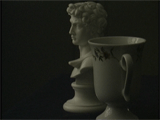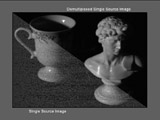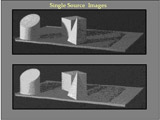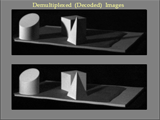Multiplexed Illumination |
 |
| Imaging of objects under variable lighting directions is an important and frequently used procedure in computer vision and computer graphics. In this project, we have developed an approach that significantly improves the quality of images under different lighting directions. Traditional methods for acquiring images under different illumination directions use only a single light source per acquired image. In contrast, our approach is based on the principle of multiplexing in which multiple light sources illuminate the object simultaneously from different directions. Thus, the object irradiance is higher. The acquired images are then computationally demultiplexed. This approach does not increase the number of image acquisitions. It is useful for imaging dim object areas and highly specular objects. For cameras having signal-independent noise, the optimal multiplexing is achieved by using Hadamard codes, yielding significantly improved signal-to-noise ratio in the demultiplexed images. This advantage may be translated into faster acquisition times or an increase in density of illumination direction samples. It also enables one to use lighting with high directional resolution, which is easy to achieve using a digital projector as we demonstrate in our experiments. Moreover, the multiplexing approach enables imaging of diffuse reflectance while avoiding saturation of specular highlights. It is also more robust to stray light. We have analyzed limitations of the approach and identified scenarios in which the approach should be avoided. |
Publicationsprint_paperentry_byid: more than 2 or no entry matches. |
Pictures and Videos |
Slides |
Related ProjectsOptimal Illumination for Video Relighting |



